If you have been following along with our blog, you know that eelgrass has drastically declined in Morro Bay since 2007, and that we’ve been working hard to address this issue. Our staff members have been collaborating with agencies, researchers, and volunteers to conduct extensive monitoring and research efforts that will help us better understand eelgrass growth and the conditions that might be impacting it. Read on to learn about our eelgrass restoration work and other eelgrass efforts that we took on in 2017.
Experimental eelgrass transplants and transplant monitoring
In 2017, we put the knowledge we have gained to work with a small-scale experimental eelgrass transplanting. Partnering with Cal Poly San Luis Obispo (Cal Poly), California Sea Grant, National Oceanic and Atmospheric Administration (NOAA), and California Department of Fish and Wildlife (CDFW), we harvested eelgrass from a healthy eelgrass bed at Coleman Beach.
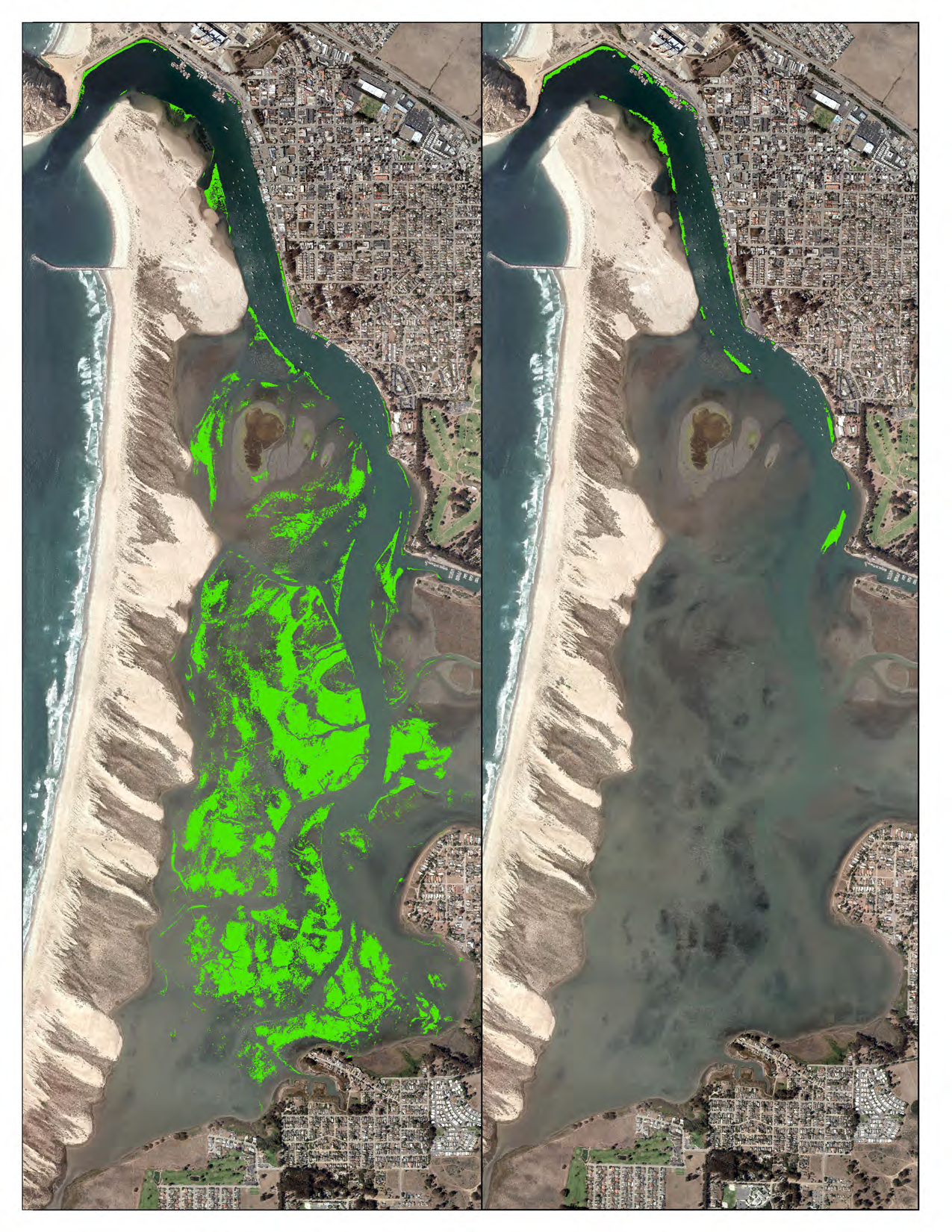
With the additional help of a small and hardy group of volunteers and Watershed Stewards Program members, we prepared the eelgrass on shore and then transplanted it in two different locations at a very low tide. One transplant site is located in the forebay across the channel from Grassy Island. The other is located near the two oyster farms in the midbay.
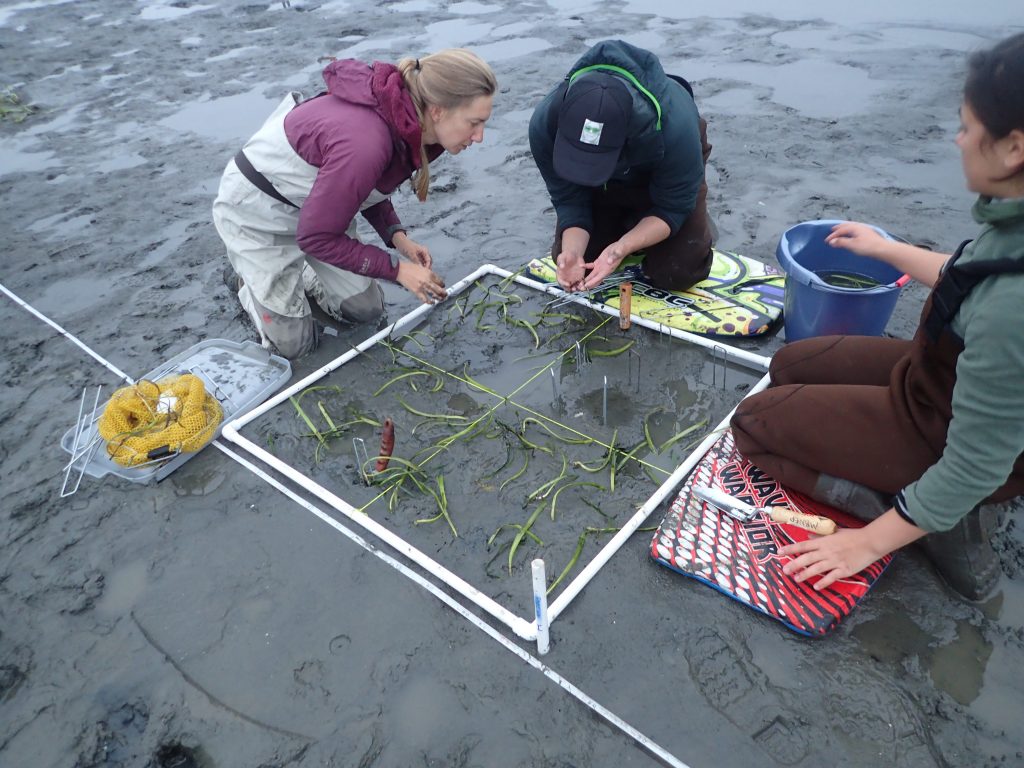
Cal Poly researchers, including graduate student Erin Aiello, conducted detailed monitoring of the transplanted eelgrass to track its progress. While the eelgrass at the forebay site continues to thrive and expand, the eelgrass at the midbay site did not survive. Through this effort, we also learned that eelgrass survival was higher when planted in the spring (March) compared to the summer (July). And while the eelgrass planted in the midbay did not survive, it provided useful information for future transplanting efforts
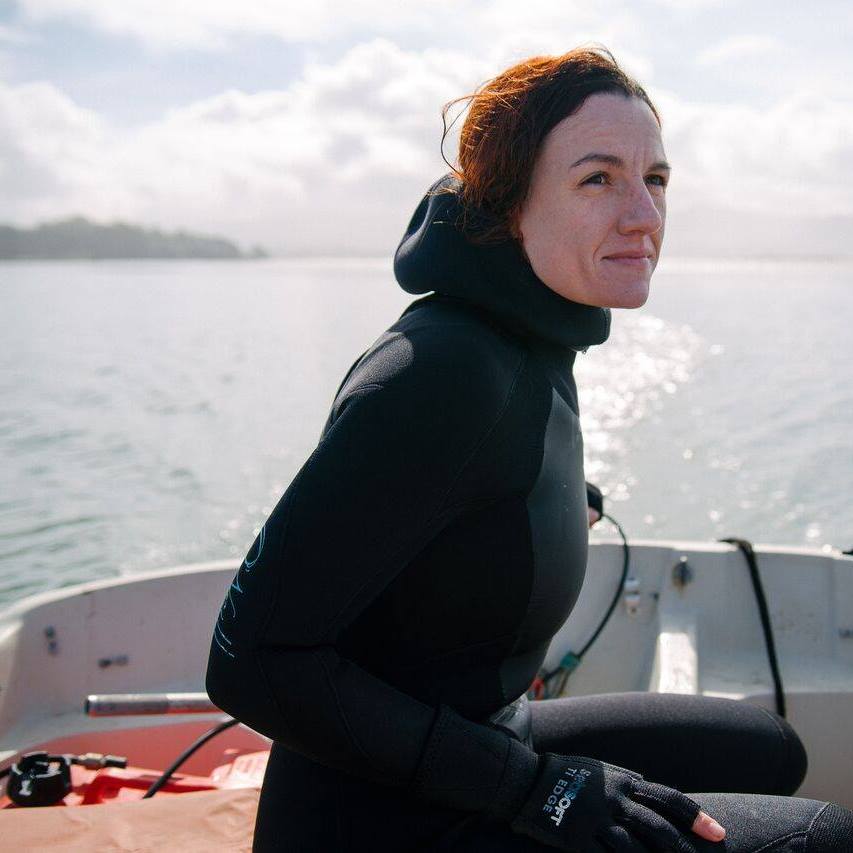
Eelgrass seed harvest and dispersal
We also harvested and dispersed eelgrass seeds this fall in order to expand eelgrass growth. We first placed the seeds we had collected in small, hand-made burlap bags. Then, we staked the bags down to the bay bottom during very low tides. This process helps to keep the seeds in areas where we think they will be able to germinate and survive.
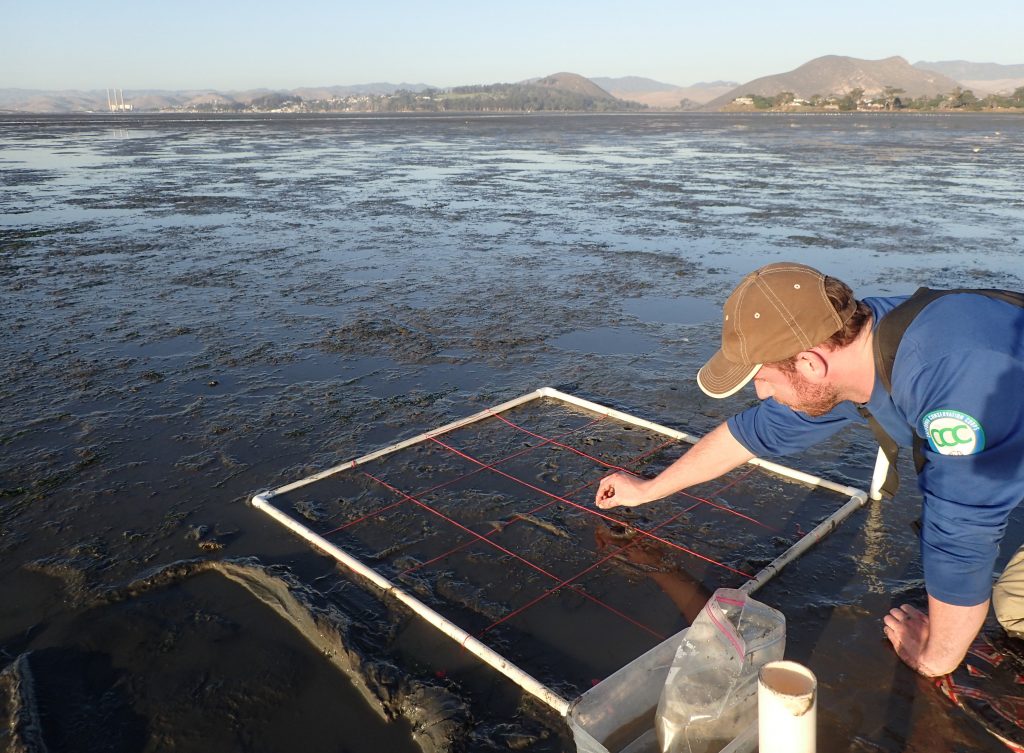
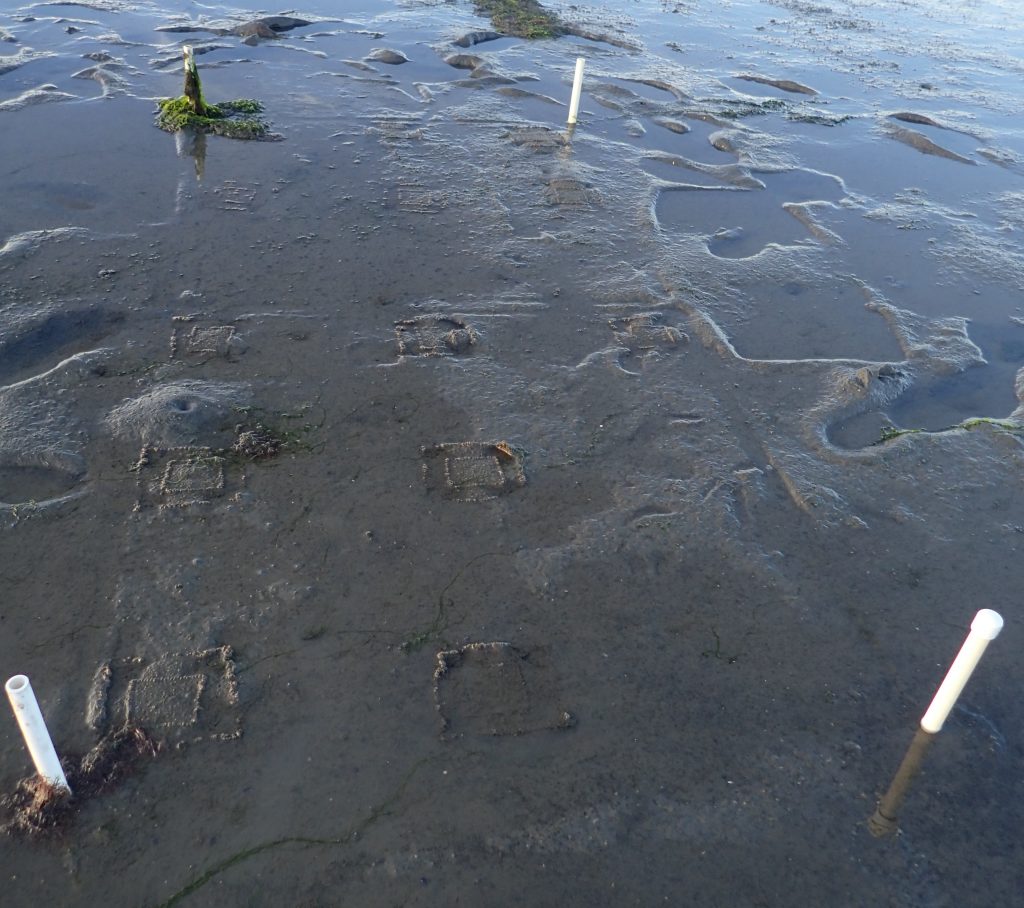
During this process, we learned a lot about eelgrass’ flowering patterns and the overall seeding process.
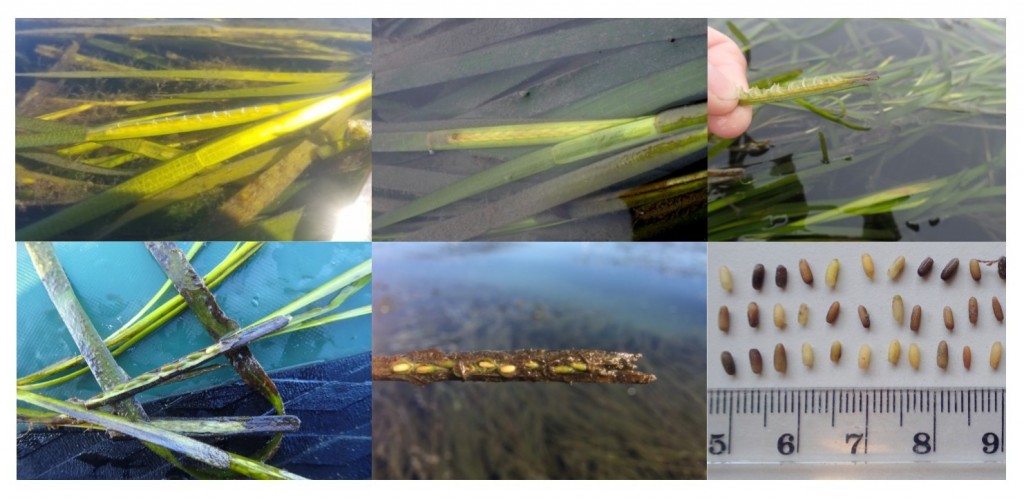
So far, these efforts seem to be paying off. We have seen about 15 seeds germinate at the back bay site, and we will continue to monitor them closely to see how they fare. These efforts have also provided us with valuable information to support future eelgrass restoration work.
Ongoing eelgrass monitoring
In order to keep careful track of the health and growth of the existing eelgrass beds—an effort we’ve undertaken since 2002—staff have continued to walk, paddle, snorkel and boat to track the status of this valuable habitat type.
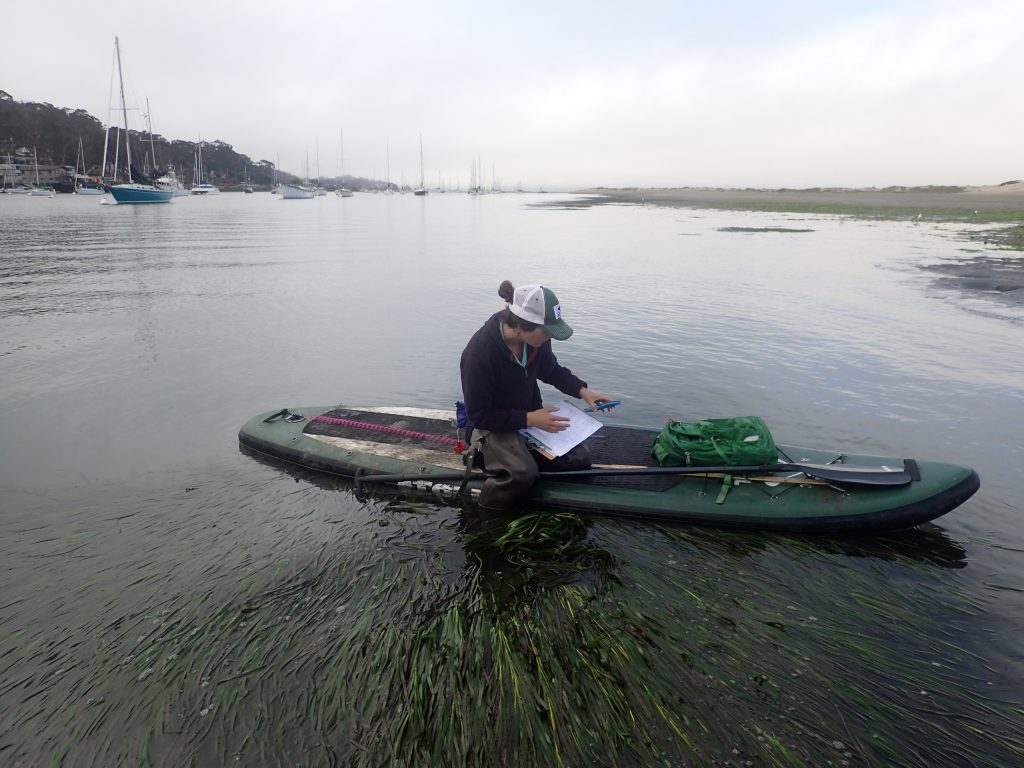
We will continue collaborating with our partners, conducting research and monitoring, and doing our best to address the issues facing eelgrass. Stay tuned; we’ll complete our next round of transplant efforts in spring of 2018 and will report back here.